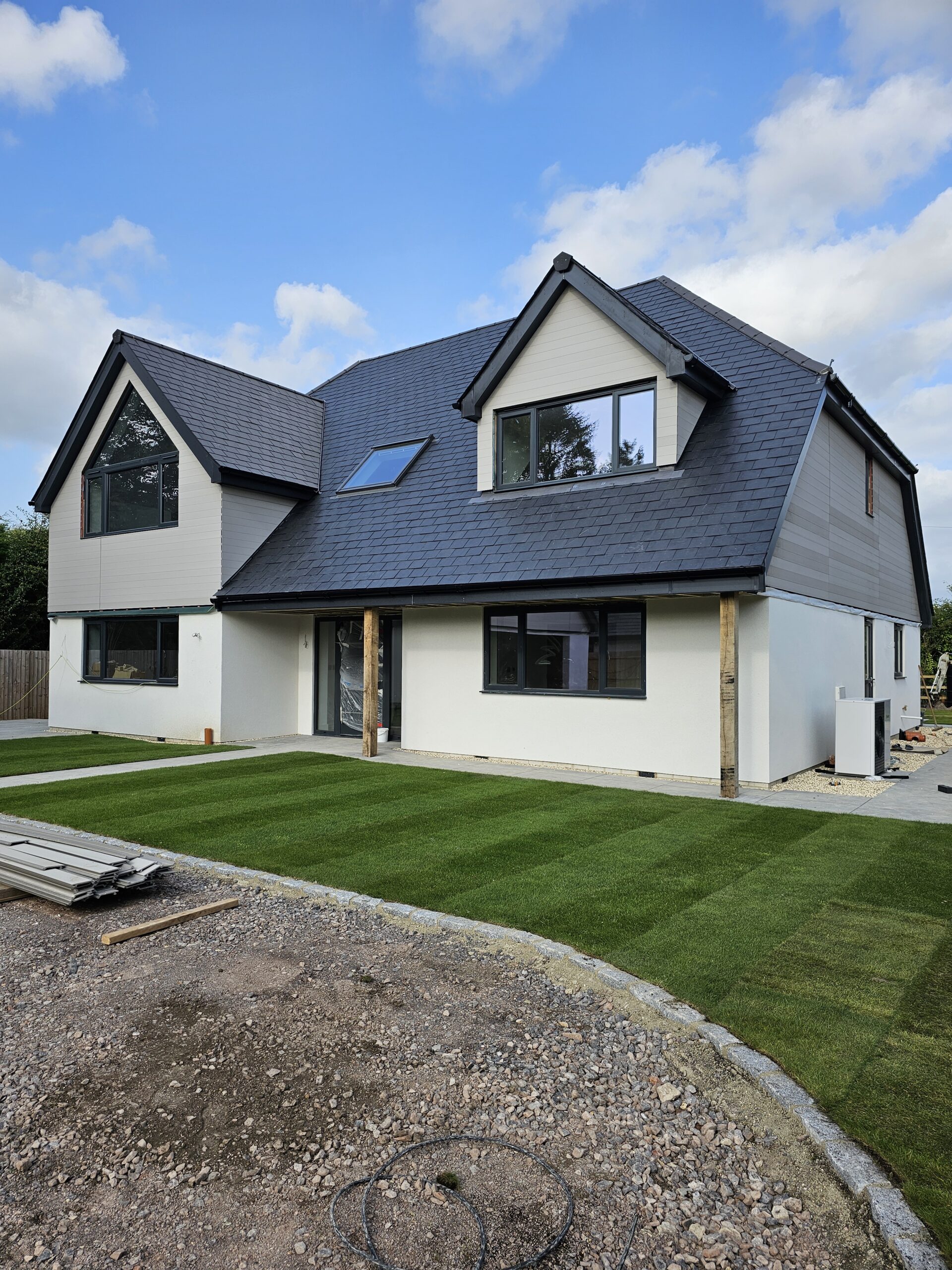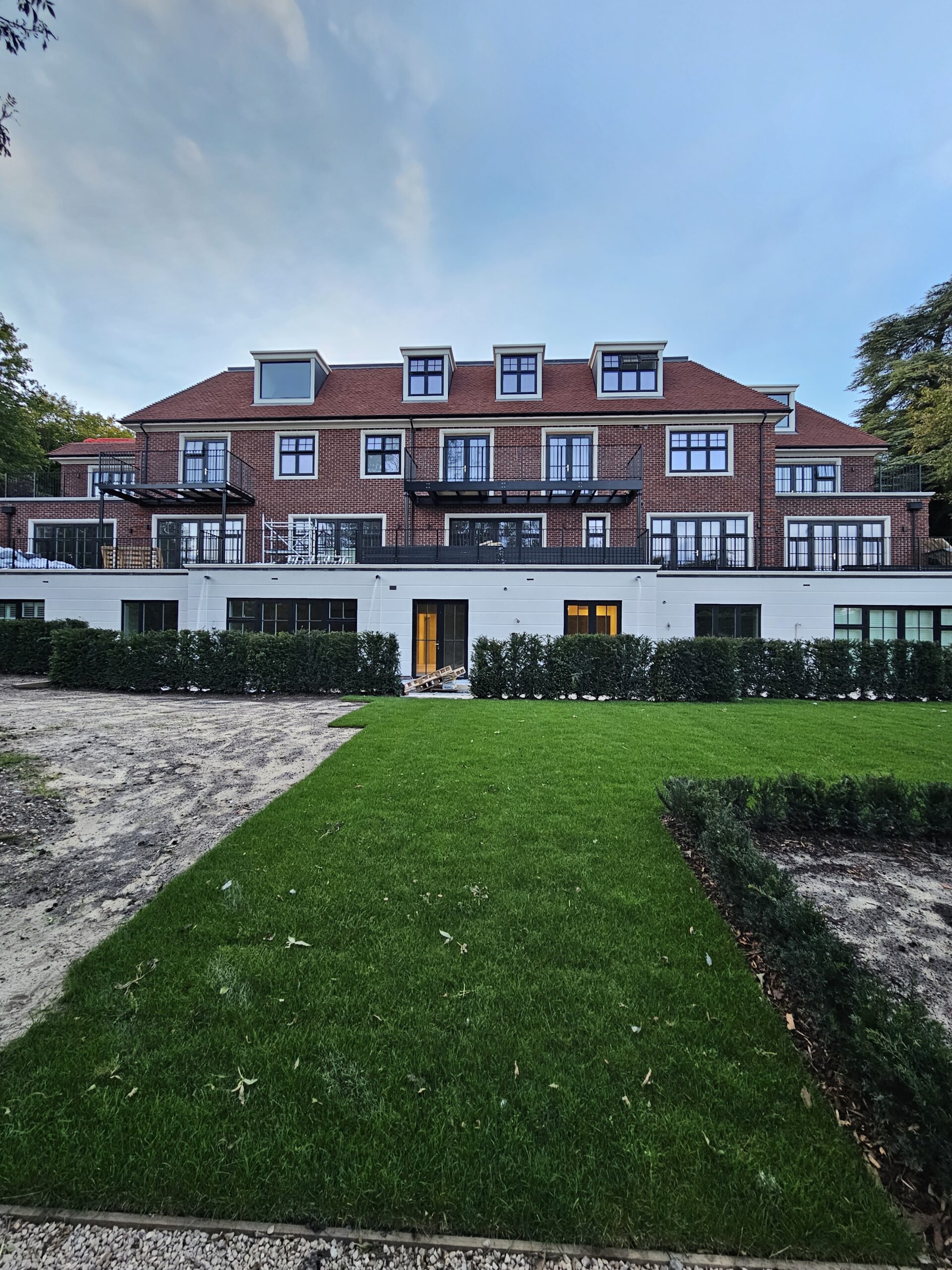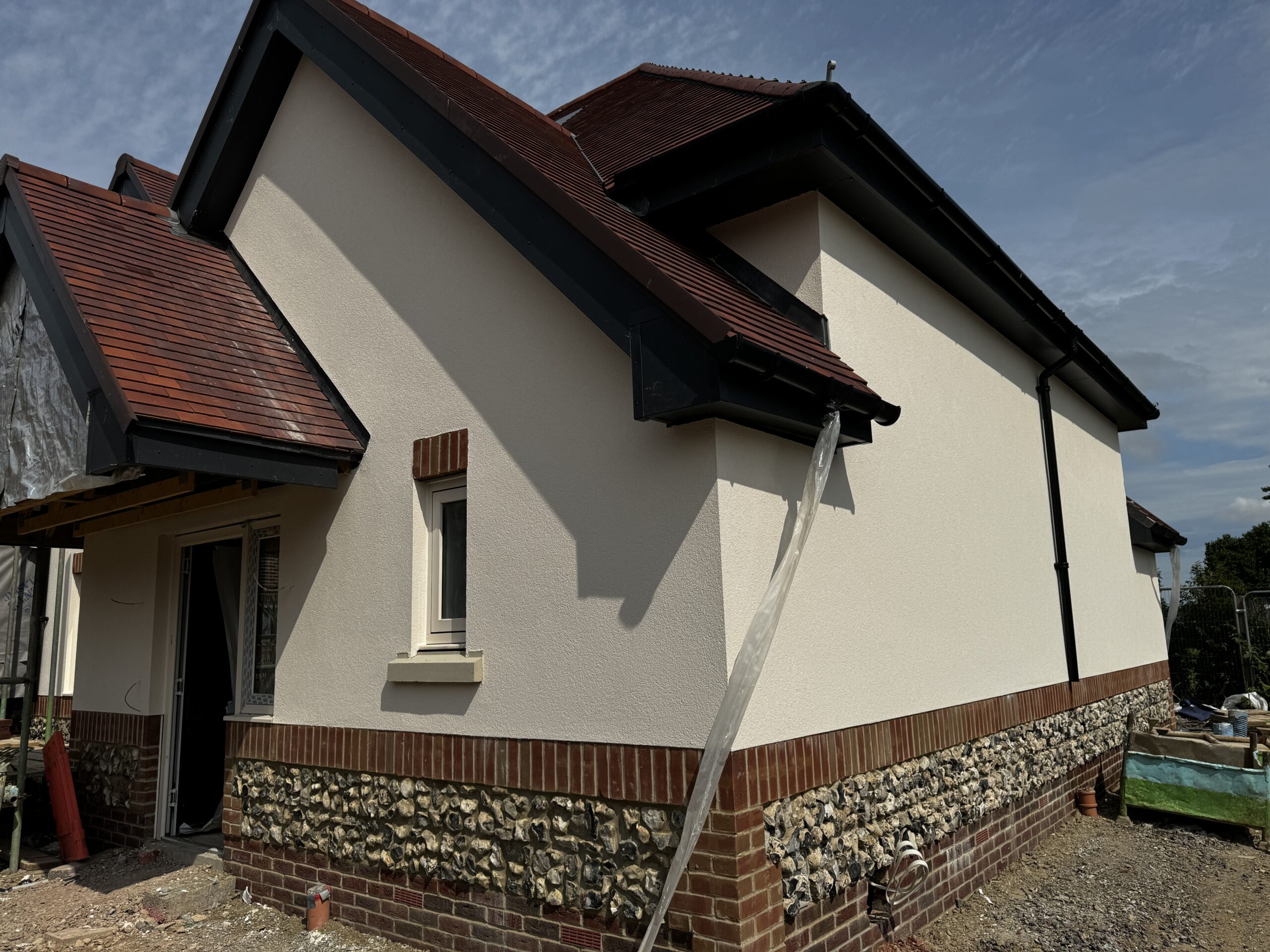Monocouche Render vs. Acrylic/Silicone Render: Aesthetic and Performance Comparison
Protecting and making your home’s exterior look nice is important. Two popular options are monocouche render and acrylic/silicone render. Let’s look at how these compare in terms of looks and how well they work, considering their special features, how they’re put on, and long-term benefits for buildings up to 8-10 floors high.
| Key Takeaways |
|---|
|
Understanding Render Types
Rendering is putting a protective layer on outside walls. It protects your home from weather and makes it look better. Monocouche render and acrylic/silicone render are newer types that last longer and look better than old cement renders. These new renders have made building easier by being quicker to put on and working better than the old ones.
Monocouche Render: One-Coat Wonder
Monocouche render is a pre-mixed, single-layer render with built-in color, eliminating the need for painting. It’s put on in one thick layer, usually 15mm thick, making it faster for many projects. Monocouche render has color all through it, so you don’t need to paint it. This means that even if it gets small chips or scratches, the color underneath stays the same, keeping the wall looking good for longer.
Key Features of Monocouche Render
- One-coat application saves time and work
- Color all through means no painting needed
- Resists weather to protect buildings from harsh conditions
- Needs less maintenance, which saves money over time
- Costs less than traditional rendering methods
Monocouche render works well for new buildings and fixing up old ones. It lets buildings “breathe,” which helps stop damp problems. This breathing ability is important for keeping a building healthy, especially in places with lots of humidity or rain. Namis Facades often suggests monocouche render because it lasts long and is easy to put on, especially for bigger projects where working quickly and getting a consistent look are important.
Acrylic and Silicone Renders: Thin-Coat Champions
Acrylic and silicone renders are put on in thin layers and are very flexible and good at resisting weather. They usually go on in two thin layers: a base layer and a top layer. While they’re often talked about together, there are some differences between acrylic and silicone renders. The thin layers allow for precise control over the final texture and look, making these renders great for getting different modern finishes.
Acrylic Render:
Acrylic render is known for lasting a long time and coming in many colors. It’s very good at keeping water out but doesn’t let walls breathe as well as some other options. It sticks well to different surfaces and resists cracks because it’s flexible. This makes it good for buildings that might move a little over time.
Silicone Render:
Silicone render is really good at keeping water out and letting walls breathe. It’s often thought of as the most advanced option, with self-cleaning properties that help it stay looking good over time. Water beads up on silicone render and rolls off, taking dirt with it. This self-cleaning effect keeps the building looking clean and means you don’t have to clean it as often, making it a great choice for fancy projects or buildings in dirty city areas.
AESTHETIC COMPARISON
| Aspect | Monocouche Render | Acrylic/Silicone Render |
|---|---|---|
| Finish Options | Traditional, textured | Smooth, modern, highly customizable |
| Color Consistency | Consistent throughout material | Surface-only; requires painting or colored finishes |
| Crack Resistance | Moderate | High (flexible materials) |
| Lifespan (with care) | 10–15 years | 20–25 years |
| Weatherproofing | Good | Excellent |
Performance Comparison
Both render types work really well, but there are some differences to think about when choosing the best one for your building project:
Performance of Exterior Render Types

Table of Comparison
| Feature | Monocouche Render | Acrylic Render | Silicone Render |
|---|---|---|---|
| Application Method | Single thick coat (15-20mm) | Two thin coats (1-3mm total) | Two thin coats (1-3mm total) |
| Durability | Resistant to weather, fire, impacts | Flexible, resists cracking | Flexible, resists cracking and self-cleans |
| Breathability | Good | Moderate | Excellent |
| Maintenance Needs | Low | Moderate | Low (self-cleaning properties) |
| Color Options | Limited pre-mixed colors | Wide range of colors | Wide range of colors |
Cost Considerations
When comparing costs, it’s important to think about both the initial installation and long-term value. How cost-effective a render system is depends on various things, including how big the project is, how complex it is to apply, and how long the render is expected to last:
| Render Type | Initial Cost (£/m²) | Lifespan (years) | Long-term Value |
|---|---|---|---|
| Monocouche | 60 | 12.5 | Good |
| Acrylic | 72.5 | 17.5 | Better |
| Silicone | 90 | 22.5 | Best |
While acrylic and silicone renders might cost more at first, they can be cheaper in the long run because they last longer and need less care. Monocouche render offers a good mix of performance and affordability, especially for bigger projects. When thinking about costs, consider things like:
- How big and complex your building project is
- Local weather conditions that might affect how well the render works and how long it lasts
- Possible energy savings from better insulation
- Lower maintenance costs over the life of the render
- How it might increase property value by making the building look better and last longer
Namis Facades can give you detailed cost analysis and suggestions based on what your specific project needs, helping you make a good decision that balances initial cost with long-term value.
Environmental Considerations
Both monocouche and acrylic/silicone renders have environmental effects to think about, showing how important sustainable building practices are becoming:
- Monocouche render is made with cement, which isn’t great for the environment when it’s made, but it lasts a long time. The long life of monocouche can make up for its initial environmental impact over time.
- Acrylic and silicone renders use man-made materials but can help save energy because they insulate well. Their thin layers might mean using less material overall.
- Both types can make a building more energy-efficient when used as part of an external wall insulation system, potentially reducing energy use and the carbon emissions that come with it.
- The self-cleaning properties of silicone render can mean using fewer chemical cleaners and needing less frequent maintenance, which is better for the environment over the render’s lifetime.
- Some manufacturers are making more environmentally friendly render formulas, using recycled materials or ingredients that don’t release harmful chemicals into the air.
Namis Facades can advise on the most environmentally friendly options for your specific project, thinking about things like local climate and building design. We keep up with the latest developments in sustainable rendering solutions and can recommend products that are good for the environment while still meeting performance requirements.
Making the Right Choice for Your Project
Choosing between monocouche and acrylic/silicone render depends on various factors, each of which should be carefully thought about to ensure the best outcome for your building project:
- Building type and height (up to 8-10 floors): Think about the structural characteristics and architectural style of your building.
- Local climate and exposure to weather: Consider things like rainfall, humidity, temperature changes, and sun exposure.
- Desired look and color options: Decide on the visual impact you want to achieve and the range of finishes available.
- Budget constraints: Balance initial costs with long-term value and maintenance requirements.
- Long-term maintenance preferences: Think about how willing and able you are to perform regular maintenance tasks.
- Environmental goals: Consider the sustainability aspects of each render type and how they might help with energy efficiency.
- Regulatory requirements: Make sure you comply with local building codes and regulations about exterior finishes.
Talking to experts like Namis Facades can help you make an informed decision based on your specific needs and circumstances. Our team can provide detailed assessments, including on-site evaluations, to recommend the most suitable rendering solution for your project.
Conclusion
Both monocouche and acrylic/silicone renders are big improvements over traditional cement renders, giving building owners better options for protecting and improving their properties. Monocouche is great for easy application and cost-effectiveness, making it a good choice for big projects or those with tight deadlines. Its color-all-the-way-through formula means it looks good for a long time with little maintenance.
Acrylic and silicone renders, on the other hand, are more flexible and last longer, with silicone renders also being better at repelling water and cleaning themselves. These thin-coat options offer more finishes and colors, making them ideal for getting specific looks or modern design visions.
For buildings up to 8-10 floors, either option can provide excellent protection and look great. The choice really depends on your specific needs, budget, and how much maintenance you’re willing to do over time. Things like local weather, how exposed the building is, and environmental considerations should all play a part in your decision.
Namis Facades has lots of experience with both rendering systems and can give expert advice to help you pick the best option for your project. We look at all aspects of your building’s needs, from how you want it to look to how it needs to perform and its long-term value. Whether you care most about quick application, long-lasting durability, or specific aesthetic qualities, there’s a render solution that’s perfect for you.
Remember, a well-chosen and properly applied render not only protects your building but also makes it more valuable and look better for years to come. It’s an investment in your property’s longevity and beauty that pays off in terms of less maintenance, better energy efficiency, and making your property look more attractive.
Contact Namis Facades today to explore the best rendering options for your property. Our team of experts is ready to give personalized advice, detailed quotes, and professional application services to ensure your building gets the protection and finish it deserves. Let us help you transform your property with a rendering solution that combines beauty, durability, and performance.


